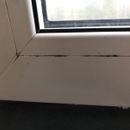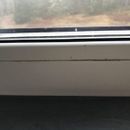Why are these windows leaking?
We installed Intus windows in our new house. The walls are double stud, 2×4 walls, 11½” thick. Insulation is dense-packed cellulose. The exterior sheathing is Zip panel, all seams taped.
Shortly after installing all the windows, which are flashed above with aluminum, I noticed a bit of rust accumulating inside the window frame. I then began to notice what appeared to be dirt or grime on the inside of the windows. I thought this was just dust from construction.
Now, though, we’ve had several instances in which water has come in through the window itself. This has happened on three or four of the windows, all of which face south or east. (In our location, off the coast of Maine, that’s facing the ocean and also facing our prevailing winds.)
During rain, even when the rain is not driven hard against the exterior wall, there seems to be water collecting inside the window frame itself. The question is how it’s getting in. Is it possible that wind (or even negative pressure from our HRV) is driving water right through the silicone seal at the base of the glass on the outside? It seems hard to believe it’s getting through the aluminum flashing at the top of the window. We’ve seen no evidence of water getting in anywhere else along those walls.
GBA Detail Library
A collection of one thousand construction details organized by climate and house part












Replies
Jason,
It's hard to tell without a site visit. If your house is depressurized, the depressurization might be contributing to the problem, so you should probably invite a home performance contractor to do a worst-case depressurization test.
Diagnostic work on this type of leak usually involves waiting for a sunny day, and using a garden hose outdoors to test various hypotheses. Different sections of your window can be masked with polyethylene and high-quality tape before testing begins to exclude certain water entry paths, and successive tests should reveal the water flow path.
Jason, a problem with windows designed to be self-draining in coastal locations is that constant wind can prevent them from draining, and water can build up over the seals. Are you on a bluff or hill by any chance?
I don't understand your aluminum flashing comment. A window like this, especially in a coastal location, should be fully sealed to the WRB with high-quality tape. Aluminum flashing just kicks bulk water away from the window or casing. It should be water-tight before the flashing is installed.
Is the window installed at the sheathing layer ("outies") or inset into the wall? If inset, and you have a thick rain screen, there is a technique to address this problem, running the sill extension above the weep holes to isolate them from driving wind. It's not an "approved" detail as far as I know, but it works. There needs to be a clear drainage path from the weepholes, though.
Thanks for those answers. We are on a hill—perched on a ledge at the top of a steep hill, to be more precise, so your suggestion about constant wind makes sense.
We're getting rain later today, so I'm going to monitor which windows (if any) leak. When we get a sunny day I will try Martin's suggestion.
Lastly, regarding the flashing, sorry for the confusion. We sealed the rough opening with Zip tape completely, and the aluminum flashing is on top of that. The upper edge of the aluminum is also sealed to the sheathing with Zip tape.
Jason, what happens with a house on a hill is the same as what gives airplane wings lift, called the Bernoulli principle--the wind has to accelerate over the hill to keep up with the rest of the air mass, so a gentle breeze at sea level can turn into constant 30kt winds on the hill. I had a similar failure once long ago so I learned this the hard way. Most windows are not designed for this situation, and unfortunately the garden hose test doesn't help unless there is a wind preventing the weep holes from draining. That said, I agree with Martin that a good building analyst could help you get to the root of your problem.
I still don't understand how your windows are sealed or installed. Are they outies or innies? Is the WRB sealed to the window? "We sealed the RO" doesn't really mean anything to me. Do you have flanges or is the Zip tape sealed directly to the face of the window frame? There are many ways to install a window; a photo would be helpful.
Jason,
You might want to check that the drain holes on casings and the window frames are not plugged. I had an issue with a tilt and turn where the bottom flashing/caulking covered one drain hole and water was pooling in the casing.
Best of luck.